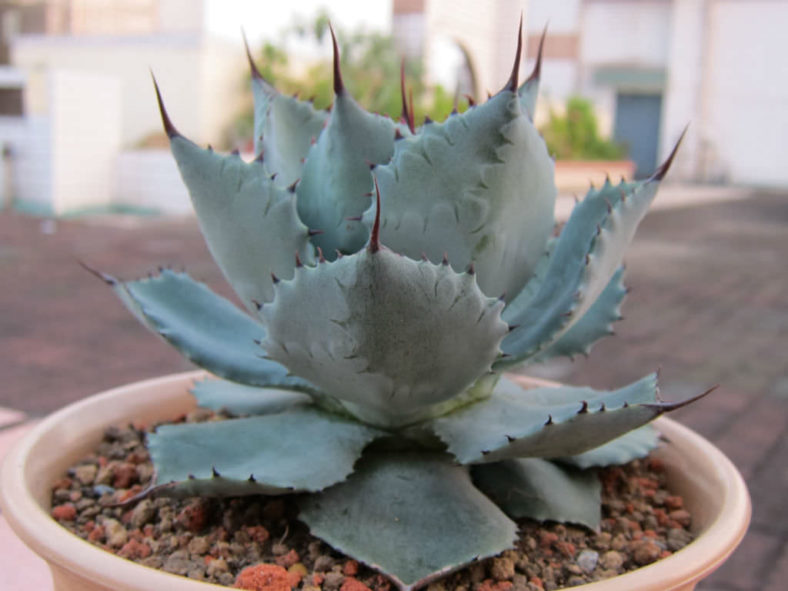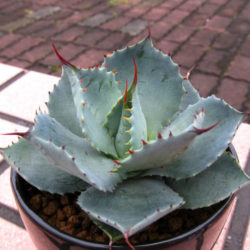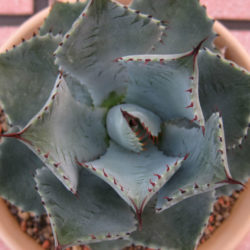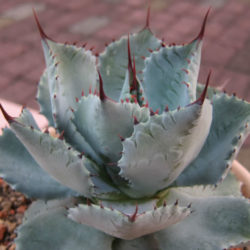Scientific Name
Agave potatorum var. verschaffeltii (Lem. ex Jacobi) A.Berger
Accepted Scientific Name
Agave potatorum Zucc.
Common Name(s)
Butterfly Agave
Scientific Classification
Family: Asparagaceae
Subfamily: Agavoideae
Genus: Agave
Description
Agave potatorum var. verschaffeltii is a slow-growing succulent that forms symmetrical rosettes of broad, gray-green to blue-green leaves with a long terminal spine and sinuous margins with short spines. It usually grows solitary or sometimes produces a few offsets around the base. The rosettes can reach a diameter of 2 feet (60 cm). The leaves are up to 16 inches (40 cm) long and have distinct showy bud imprints.
The flowers are light green, tinged with red, and subtended with red bracts. They appear on an erect, up to 16.5 feet (5 m) tall spike, usually during the fall.
Origin
Agave potatorum var. verschaffeltii is native to the partial desert areas of Mexico from Puebla south to Oaxaca. It is not accepted as a variety and is listed as a synonym of Agave potatorum.

Hardiness
USDA hardiness zone 9b to 11b: from 25 °F (−3.9 °C) to 50 °F (+10 °C).
How to Grow and Care
Agaves are not difficult plants to grow. They are slow-growing and dramatic and will even thrive on a bit of neglect. If you are the type of person who likes to fuss with houseplants and water a lot, Agave is probably not the plant for you. If, however, you're the type of person who likes to set it and forget it, and you have a sunny window, Agave might be the way to go. Be aware that some large varieties will eventually outgrow your room (unless you have a large greenhouse), and Agave can be aggressive. They have irritating sap and sometimes very sharp thorns that can cause injuries to small children and even pets.
In general, Agaves do not need to be repotted every year. Most species commonly found in cultivation grow slowly and take long to outgrow their pot. It's also best to handle your Agave as little as possible since they do not like to be disturbed. When repot, refresh the spent soil with a new potting mix and make sure the plant is firmly anchored in its pot.
See more at How to Grow and Care for Agave
Links
- Back to genus Agave
- Succupedia: Browse succulents by Scientific Name, Common Name, Genus, Family, USDA Hardiness Zone, Origin, or cacti by Genus
Photo Gallery
Click on a photo to see a larger version.


